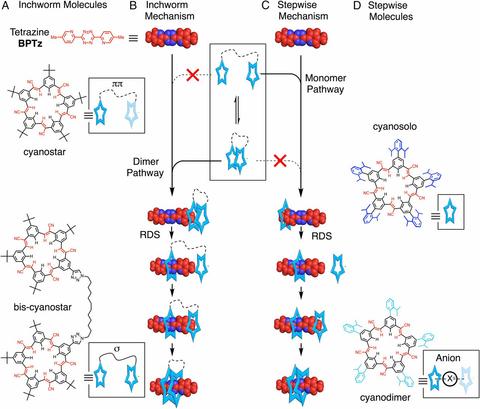Inchworm movement of two rings switching onto a thread by biased Brownian diffusion represent a three-body problem

This article describes a molecular realization of the classical three-body problem, where the motion of three or more bodies is directed by a set of pairwise forces. Surprisingly, motion of the components of the three-body molecular systems is found to be highly choreographed by differences in strength of intercomponent interactions, promoting a rare inchworm-like loading of molecular rings onto a molecular thread. Our work demonstrates the utility of an integrative approach to design and develop functional molecular machines.The coordinated motion of many individual components underpins the operation of all machines. However, despite generations of experience in engineering, understanding the motion of three or more coupled components remains a challenge, known since the time of Newton as the “three-body problem.” Here, we describe, quantify, and simulate a molecular three-body problem of threading two molecular rings onto a linear molecular thread. Specifically, we use voltage-triggered reduction of a tetrazine-based thread to capture two cyanostar macrocycles and form a [3]pseudorotaxane product. As a consequence of the noncovalent coupling between the cyanostar rings, we find the threading occurs by an unexpected and rare inchworm-like motion where one ring follows the other. The mechanism was derived from controls, analysis of cyclic voltammetry (CV) traces, and Brownian dynamics simulations. CVs from two noncovalently interacting rings match that of two covalently linked rings designed to thread via the inchworm pathway, and they deviate considerably from the CV of a macrocycle designed to thread via a stepwise pathway. Time-dependent electrochemistry provides estimates of rate constants for threading. Experimentally derived parameters (energy wells, barriers, diffusion coefficients) helped determine likely pathways of motion with rate-kinetics and Brownian dynamics simulations. Simulations verified intercomponent coupling could be separated into ring–thread interactions for kinetics, and ring–ring interactions for thermodynamics to reduce the three-body problem to a two-body one. Our findings provide a basis for high-throughput design of molecular machinery with multiple components undergoing coupled motion.